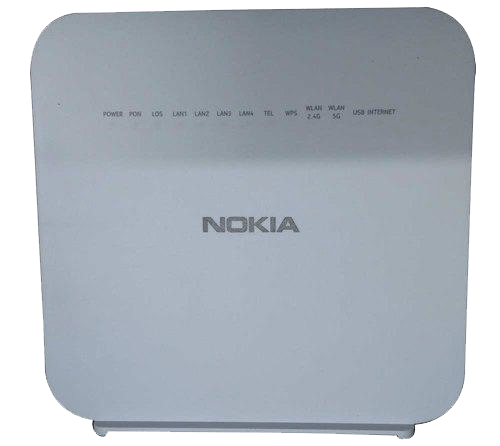Telecom regulator Nta has set a minimum specs standard for routers (CPE devices) with an aim to ensure a quality broadband connection for all internet customers. The authority believes the defined minimum requirements will address the persistent dissatisfaction of internet consumers regarding poor internet performance.
NTA decided to enforce its router policy as per Section 13 (cha) and Section 14 of the Telecommunications Act, 2053, and Rule 15 (ka) of Telecommunications Regulations, 2054.
The news of NTA determining minimum specs for routers broke last year in August and there was news the authority could release its recommendation in weeks. However, the basic spec criteria have been released after almost a year. Now, service providers who provide internet service must ensure that the routers they offer comply with the standards as prescribed by NTA.
Prior to this, there were no criteria for the router’s minimum specifications. This led to the indiscriminate mobilization of routers by service providers leading to inconsistent internet performance among consumers. On the other hand, it also means customers are likely to pay more for low-quality routers without prior knowledge of their quality. With the routers’ specs in place though, the basic performance issues could dissipate once ISPs issue compliant routers to their customers.
Check out: How to Set Up a Secondary Router? Learn the Steps
Find out the minimum standard criteria of routers set by NTA
A recent board meeting of NTA has defined minimum specs requirement for routers under the title ‘Minimum Requirement of CPE Device’.
- As per the specs sheet, a router needs to have WLAN 802.B/G/N/AC compatibility. Likewise, it must have an Ethernet port of 1 Gbps network capacity and a fiber SFP port.
- Nta also mandates the use of dual-band routers with at least two antennas. The regulator says a household router must have both 2.4 GHz and 5 GHz bands under the ISM band.
- A router must not exceed 1 watt in transmission power and 4 watts in EIRP.
All the minimum specs (standard) required for a home-based WiFi router set by NTA:
| Description | Router specifications set by NTA |
| WLAN Standards | 802.11b/g/n/ac |
| LAN ports | At least 1 Gb Ethernet port/1 fiber SFP port |
| Frequency supports | 2.4 GHz/5 GHz (ISM band) |
| Radiated power | Max transmit power: 1 W (30dBm) Max EIRP: 4W (36dBm) in 2.4 GHz/5.8 GHz band |
| Data rate | At least 150 Mbps for 2.4 GHz and 650 Mbps for 5 GHz |
| Antenna | At least two fixed Omni-directional internal or external antennae with a gain of at least 3 dBi/5 dBi |
| Min. Coverage | 100 m (LOS) & 30m (NLOS) |
| Mode | AP, Bridge |
| SSID | BSSID support, at least 2 SSID support, hidden SSID support |
| Smart QoS support | Easily configurable, user-definable rule based on IP/MAC/port filtering, WMM, WPS |
| Security | WPA/ WPA2/3, OWE, secure authentication |
| Hardware | At least 0.6 GHz dual-core CPU, >= 256 MB DDR3 memory |
| Power | PoE (optional) |
| Protocol support | IPv6, ICMP, SNMP, CWMP, NAT, DHCP, VPN, VLAN |
| Client Access | Client app for status and performance monitoring (MRTG graphing) by service providers |
| Other technology support | SDN/OpenFlow, ADLS/ ADLS+ |
| Additional feature | DFS, TPC support |
Through the specs, NTA has also tried to address the issue of possible low coverage and performance issues from routers. It says a router must support dual-band frequency and deliver signals at least 100 meters far.
For security, it is recommended that each router has new security protocols such as WPA, WPA 2/3, and support IPv6 internet connection.
Don’t miss: 4 Reasons You Should Upgrade to a Dual-Band Router

Routers of various price ranges are available in Nepali markets. Customers can buy routers from as low as Rs. 2,000 to high-end ones for quality broadband solutions. Additionally, ISPs bundle a low-end router to their customers on the condition the customers return them upon cancellation of the subscription. Check out: Wifi 6 Routers Price in Nepal
NTA enforces strict requirements on routers issuance
At the same time, the telecommunications authority is also stepping up its efforts to ensure internet customers get the service that they have paid for. NTA will monitor whether the ISPs are adhering to its defined criteria on WiFi routers and assess customers’ reviews.
It is strictly mandated that ISPs only bundle the Wifi routers which are fully compliant with the requirements set by NTA and service providers must provide router (CPE) maintenance support within a day. ISPs should also adopt a placement strategy to ensure the router starts working to its full capacity.
The regulator has also required ISPs to use NMS/ACS servers to troubleshoot any issues a customer might face.
In news which could be delightful to the customers, NTA says the routers ISPs dispatch for their customers must support interoperability. That is a router by one ISP can be reusable for another ISP’s service. It saved the cost for customers when they decide to switch their service provider. For this to happen, ISPs must unlock the CPE device for another ISP to reuse on their service.
Likewise, the router should be bundled with at least one year of warranty. The ISPs are also restricted from offering a used or refurbished router.
Also read: How To Choose the Best Router for Your Home WiFi?
Nepali ISPs offer shared connections in various price ranges. Major companies have started offering 5 GHz routers to address some common issues relating to internet performance.
However, limited customers buy them and the issue of poor internet connection is still widespread. Let’s expect the router standardization will help to nullify the case for all.
Do Read: How to improve internet speed in your home?
Does your home WiFi router have the minimum standard specs as mandated by NTA, and how does it perform especially in terms of speed, coverage, and consistency? You can share in the comments below.













